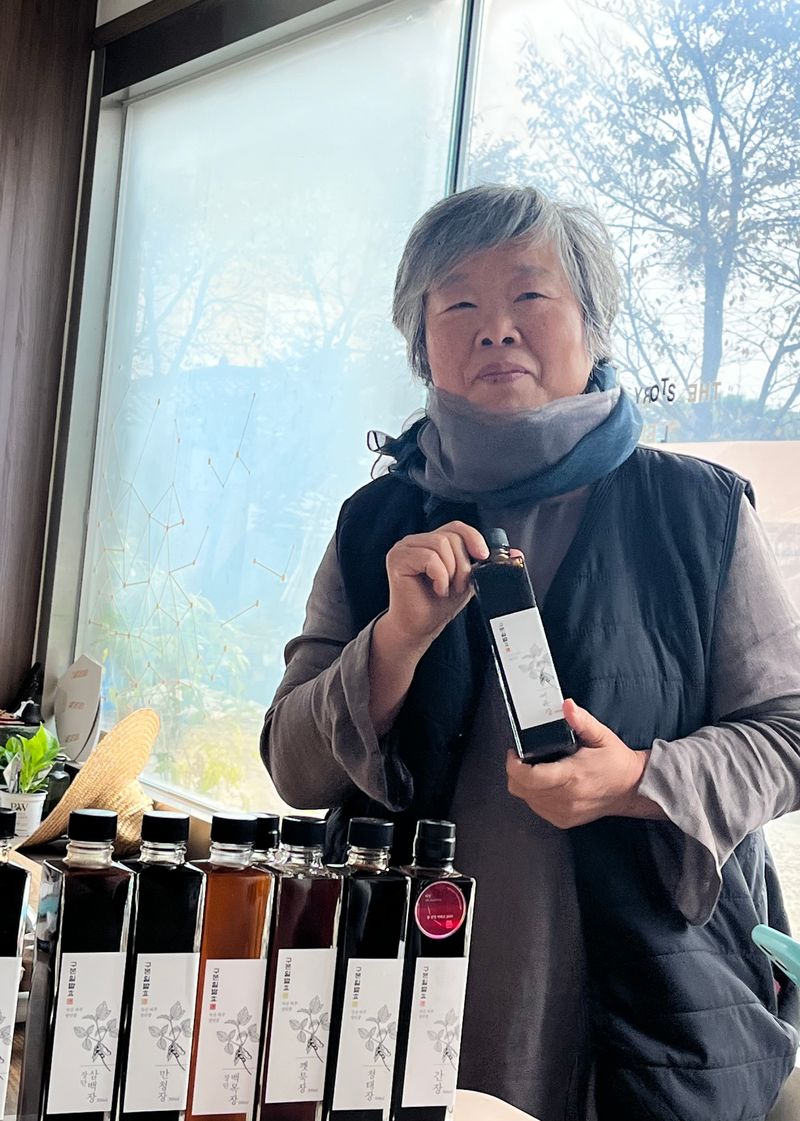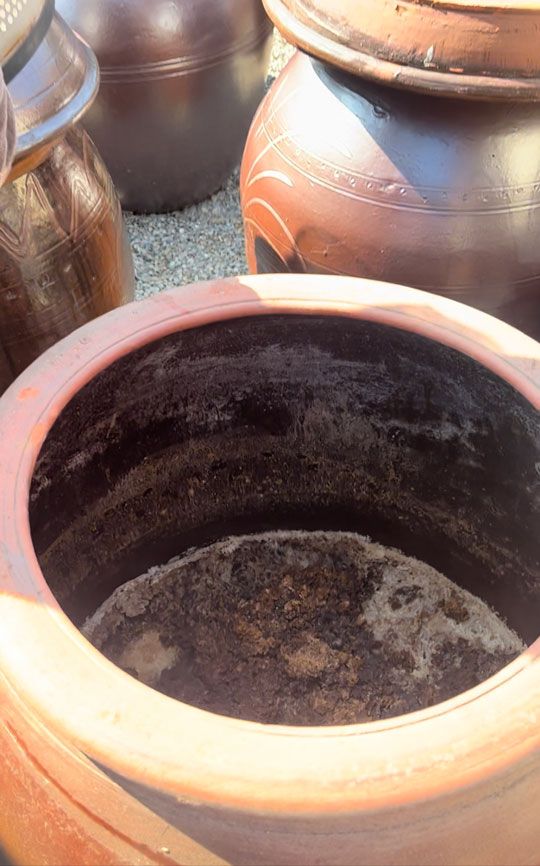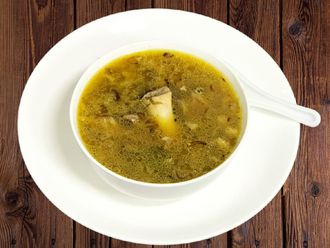
Dubai: Why is Korean food so addictive? Korean food isn’t just a meal; it’s an experience that dances on your taste buds and leaves you craving more! At the heart of this culinary wonder is a deep reliance on pickling and fermentation, which infuses dishes with bold, complex flavours that are utterly irresistible.
Imagine biting into spicy kimchi, bursting with tangy zest, or savouring the rich umami of perfectly aged soy sauce— it’s no wonder that once you start, you can’t stop! Korean cuisine is a blend of savoury, sweet, sour, and spicy that creates a symphony of flavours in every bite!
A journey through flavour and tradition
Gulf News embarked on an unforgettable journey to South Korea, delving into the world of fermentation, where we had the privilege of meeting the remarkable Master Kubonil. At 69, she embodies the rich tapestry of Korean culinary heritage, dedicated to the age-old craft of traditional soy sauce and fermented condiments.

Tucked away amidst the picturesque rolling fields of Paju in South Korea's Gyeonggi Province, her farm, “Gu Bon-il Fermentation,” is a true treasure trove. Here, over 300 fermentation jars stand proudly, each one a vessel of flavour, patiently aging to create the deep, complex profiles that define authentic Korean sauces.
As we walked through the rows of onggi—traditional earthenware jars—Master Kubonil shared her passion and expertise, revealing the secrets behind her craft. The air was filled with the aroma of fermenting ingredients, each jar holding the promise of culinary magic. With every sip and taste, we discovered not just flavours but the stories and traditions that have been passed down through generations.

Master Kubonil's passion for fermentation began over 20 years ago, ignited by a quest to uncover the authentic essence of Korean jang (fermented sauces). She said: "I have made an extensive researched for over 10 years on traditional jang and established “Kubonil Fermentation”, with a commitment to preserving tradition. I am using only three pure ingredients—Jangdang soybeans, Sinan-gun salt, and pristine water—eschewing any additives." Her black soybean ganjang, made from beans she personally cultivates, has earned a revered reputation, embodying the profound umami that characterises traditional Korean cuisine.

Master Kubonil said: "I have been deeply interested in the use of beans in dishes. In 1994, I opened a restaurant specialising in bean dishes in Seoul, and I started researching and experimenting with soybean fermentation. I decided I would ferment soybean to make soy sauce, which would be used at my restaurant.
"The restaurant has finally become a hot spot after going through a difficult period. After my husband retired in 2000, I returned to farming in his hometown of Paju, and, have since, continued research and experiments on soybean cultivation and fermentation. In 2018, Kubonil Fermentation was established to sell ganjang (soy sauce), gochujang (red chili paste), cheonggukjang (a robust fermented soybean paste), and doenjang (a longer fermented soybean paste). In 2021, Kubonil Fermentation Academy was established to provide fermentation training.

Crafting flavour, one jar at a time
The art of fermentation is a labour of love. Each jar of Master Kubonil's soy sauce undergoes a meticulous double fermentation process, aging in natural elements—sunlight, air, and time. This dedication results in a flavour profile that is richer and more concentrated than mass-produced alternatives, which often rely on shortcuts and additives.
Each year, Master Kubonil crafts over 10,000 bottles using a staggering 4,000 tons of beans, transforming simple ingredients into culinary treasures. Currently, Kubonil Fermentation has a total of four employees.
How much does it cost in the market? Master Kubonil replied: "While a bottle of a three-year fermented soy sauce might retail for 14,000 Korean Won (Dh38), a rare eight-year version can command up to 100,000 Korean Won (Dh260)."

The cultural significance of jang
Dive into the world of jang, the cornerstone of Korean cuisine, where ancient techniques meet vibrant flavours. This trio of fermented wonders—ganjang, doenjang, and gochujang—is not just seasoning; it’s a legacy, steeped in centuries of history and cultural significance.
Master Kubonil explains: "The origins of jang trace back to a time when preserving food was crucial for survival during harsh winters. As communities adapted, they perfected the art of fermentation using simple, plant-based ingredients combined with koji mold and meju (fermented soybean blocks). This alchemical process transforms humble soybeans into rich, flavourful sauces to enhance dishes and boost nutritional value and promote health. For instance, cheonggukjang, is lauded for its potential to inhibit colon cancer cell growth, showcasing the remarkable benefits of these age-old practices.

Crafting flavour: A labour of love
Master Kubonil added: "Making jang is an art that requires patience and skill. Each household traditionally crafted its own jang in onggi, breathable earthenware jars that allow air and moisture to work their magic. The journey begins in the fall, with soybeans boiled and formed into meju blocks, hung up to dry and inoculate with beneficial microbes. By spring, these blocks are transformed: the meju becomes savoury soybean paste, while the brine matures into the dark, flavourful ganjang.
Gochujang, on the other hand, is a sweet-spicy blend of rice flour porridge, powdered meju, and malted barley, aged to perfection over several months. This complex fermentation process, relying on the elements of air, sun, and time, results in jang that is not only flavourful but often commands a premium price in the market—testament to the craft behind each bottle.

The heart of Korean cooking
When it comes to Korean kitchens, you’ll find jang at the heart of nearly every dish. From soups to marinades, these fermented sauces deliver the salty, spicy, and umami notes that define the cuisine. Every Korean cook relies on three staples:
• Ganjang: The backbone of seasoning, used in everything from dipping sauces to soups. Traditional ganjang is pure, made with just soybeans, salt, and water—no additives.
• Doenjang: Essential for banchan (side dishes), stews, and marinades, doenjang is often compared to miso but holds its own with a distinctive flavour profile. While some modern versions cater to younger tastes with added sweetness, traditional doenjang is prized for its depth.
• Gochujang: Perhaps the most recognised outside Korea, this fermented chili paste adds heat and sweetness to dishes. A more recent introduction to Korean cuisine, gochujang has evolved into a beloved staple, often used in everything from marinades to dipping sauces.

Savouring tradition
As you explore the world of jang, consider this: the deep, nuanced flavours in your favourite Korean dishes are the result of a labour-intensive process. Each drop of soy sauce or spoonful of chili paste carries the story of its creation— reflecting the dedication of generations who have perfected this culinary craft.
To experience the richness of jang, try creating a dipping sauce for grilled meats by blending equal parts doenjang and gochujang, adjusting the heat to your liking, and adding minced garlic and sesame oil for an extra layer of flavour.

With every jar crafted, Master Kubonil not only preserves the past but also cultivates a future where the traditions of fermentation continue to thrive. She said: "I am committed to the craft of fermentation, ensuring that the rich traditions of Korean sauce-making endure for generations to come. Each batch I create is a labour of love, a taste of history that I hope will inspire future chefs and home cooks alike to appreciate and preserve these time-honoured techniques. Through my sauces, I want to connect people with the flavours of our heritage, so they can savour the essence of Korean culture in every drop."

Korean traditional ganjang is made through the following process:
Take 7kg of beans to make meju and add 20 liters of salt water. This will make about 8kg of doenjang and 11-12 liters of soy ganjang. The amount is divided according to the fermentation situation.
1. Making meju: Boil or steam soybeans in water and form them into chunks.
2. Fermentation of meju: Let the meju ferment in a warm environment.
3. Drying: Dry the meju thoroughly.
4. Soaking in salt water: Place the dried meju in a jar and pour in salt water with a concentration of 17–19 per cent.
5. Aging: Allow the mixture to ferment and age for about three months.
6. Separating soybean paste (doenjang) and soy sauce: Once aged, separate the meju chunks from the liquid. The meju becomes soybean paste and the salt water becomes soy sauce.
7. Storing: Store the separated soybean paste and soy sauce in separate jars.
8. Aging for flavour: You can consume it immediately, but aging it for about another year deepens the flavour. The taste becomes more concentrated. This traditional fermentation process, passed down over generations, creates the rich, deep flavour of soy sauce.
















